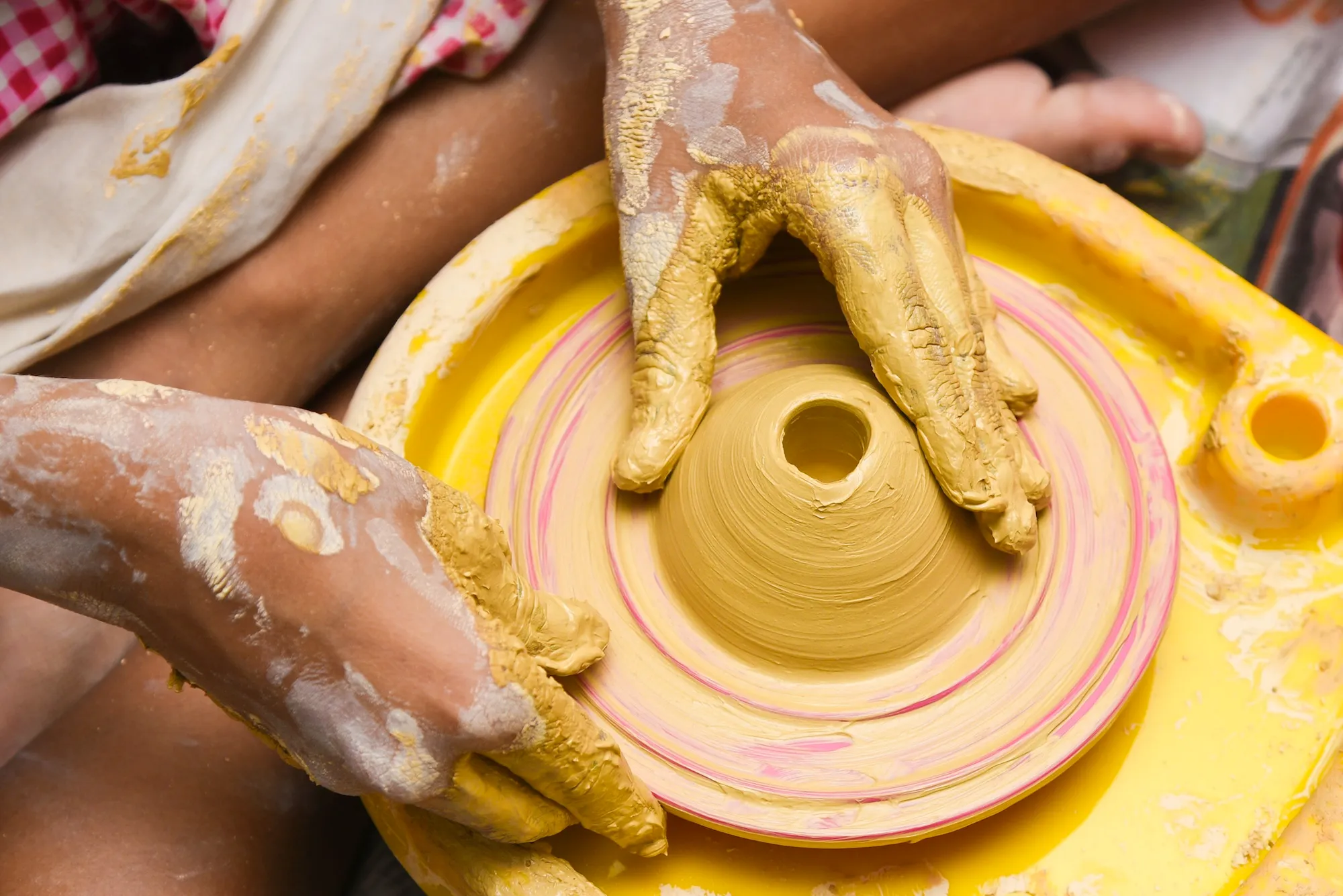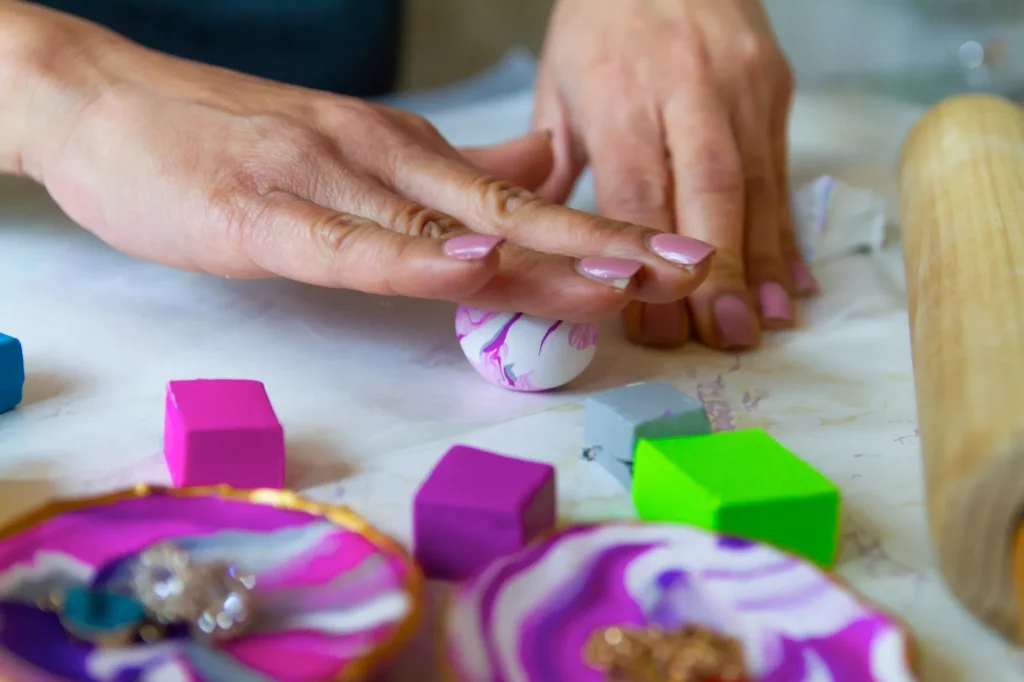Introduction
Welcome to the enchanting world of clay crafting! Whether you’re a novice or an experienced artist, clay crafting offers boundless opportunities for creativity and self-expression. In this guide, we’ll delve into the fundamentals of clay crafting, exploring techniques, tips, and FAQs to help you embark on your journey to mastery.
Understanding Clay Crafting

Clay crafting is an age-old art form that involves shaping and molding clay into various objects, ranging from pottery and sculptures to jewelry and decorative items. With its versatility and tactile nature, clay serves as a versatile medium for artists to unleash their imagination and bring their visions to life.
Crafting with clay requires patience, precision, and a keen eye for detail. Whether you’re working with air-dry clay, polymer clay, or traditional pottery clay, mastering the techniques of clay crafting opens up a world of creative possibilities.
Getting Started with Clay Crafting
Embarking on your clay crafting journey is an exciting adventure filled with endless possibilities. Here are some essential tips to help you get started:
Choosing the Right Clay
Selecting the appropriate type of clay is crucial for your crafting endeavors. Consider factors such as the desired outcome, project complexity, and your level of experience. Experiment with different clay varieties, including air-dry clay, polymer clay, and earthenware clay, to find the perfect match for your projects.
Setting Up Your Workspace
Create a dedicated workspace for your clay crafting endeavors, equipped with essential tools and supplies. Ensure adequate ventilation and lighting to facilitate your creative process. Organize your materials for easy access and convenience.
Learning Basic Techniques
Familiarize yourself with basic clay crafting techniques, such as hand-building, sculpting, and pottery wheel throwing. Invest time in honing your skills through practice and experimentation. Explore online tutorials, workshops, and books to expand your knowledge and repertoire.
Mastering Advanced Techniques
Once you’ve mastered the basics of clay crafting, it’s time to level up your skills with advanced techniques. Dive into the following areas to elevate your craft:
Surface Decoration
Explore various surface decoration techniques, including carving, stamping, and painting. Experiment with texture, pattern, and color to add visual interest and depth to your creations. Incorporate natural elements, such as leaves and flowers, to create organic motifs and designs.
Glazing and Firing
Gain proficiency in glazing and firing techniques to enhance the appearance and durability of your clay creations. Learn about different types of glazes, firing temperatures, and kiln processes. Experiment with glaze combinations and application methods to achieve desired effects.
Troubleshooting Common Challenges
Clay crafting, like any artistic pursuit, comes with its share of challenges and setbacks. Here are some common issues you may encounter along the way, along with tips for troubleshooting:
Cracking or Warping
If your clay creations are prone to cracking or warping during drying or firing, consider adjusting your clay composition, moisture content, or handling techniques. Ensure even drying and proper support during the drying and firing process to minimize the risk of deformation.
Sticking or Slumping
To prevent your clay from sticking to surfaces or slumping during shaping or drying, use appropriate release agents or supports. Experiment with alternative shaping methods and tools to achieve desired forms without compromising structural integrity.
Clay Crafting FAQs
How do I prevent air bubbles in my clay creations?
To avoid air bubbles in your clay creations, knead your clay thoroughly to remove trapped air pockets before shaping or sculpting. Additionally, consider using a rolling pin or slab roller to compress the clay evenly and eliminate air pockets.
What are the differences between air-dry clay and polymer clay?
Air-dry clay air-dries naturally without the need for firing, making it convenient for home crafting projects. Polymer clay, on the other hand, requires baking in an oven to cure and harden. Polymer clay offers greater flexibility and durability, making it ideal for intricate sculpting and jewelry making.
Can I mix different types of clay together?
While it’s possible to mix different types of clay together, it’s essential to consider compatibility, shrinkage rates, and firing temperatures. Experiment cautiously and conduct test firings to assess the suitability of clay blends for your specific projects.
How can I add color to my clay creations?
You can add color to your clay creations using various methods, including painting, glazing, and tinting the clay itself. Explore different coloring agents, such as acrylic paints, underglazes, and oxides, to achieve vibrant and nuanced hues.
What safety precautions should I follow when working with clay?
When working with clay, it’s essential to prioritize safety and hygiene. Wear appropriate protective gear, such as gloves and dust masks, to minimize exposure to clay dust and chemicals. Clean your workspace regularly and avoid eating or drinking while handling clay.
How can I preserve and display my clay creations?
To preserve the beauty and integrity of your clay creations, consider displaying them in a controlled environment away from direct sunlight, moisture, and extreme temperatures. Use archival-quality materials for framing, mounting, or storing your pieces to ensure longevity and protection against deterioration.
Conclusion
Embark on your clay crafting journey with confidence and creativity! By mastering essential techniques, exploring advanced skills, and troubleshooting common challenges, you’ll unlock endless possibilities for artistic expression and personal fulfillment. Whether you’re crafting pottery, sculptures, or jewelry, let your imagination soar and your hands create wonders in clay.

